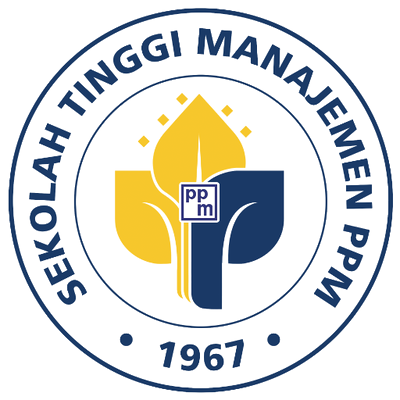PENGARUH PELATIHAN DAN PENGEMBANGAN, KEADILAN, DAN KEPEMIMPINAN TERHADAP EMPLOYEE ENGAGEMENT GENERASI MILLENNIAL DI KOTA JAKARTA
Abstract
Keywords
Full Text:
PDF2 (Bahasa Indonesia)References
Ali, H., & Purwandi, L. (2017).Millennial Nusantara. Jakarta: PT Gramedia Pustaka Utama.
Alvi, A.K. & Abbasi, A.S. (2012). Impact of organizational justice on employee engagement in banking sector of Pakistan. Middle-East Journal of Scientific Research, 12(5), 643-649
Asian Productivity Organization. (2017). APO productivity Databook. Tokyo: Asian Productivity Organization
Badan Pusat Statistik Provinsi DKI Jakarta. (2017). Jakarta Dalam Angka 2016. Jakarta: Badan Pusat Statistik Provinsi DKI Jakarta.
Badan Pusat Statistik. (2013). Proyeksi Penduduk Indonesia 2010-2035. Jakarta: Badan Pusat Statistik.
Biswas, S., Varma, A., & Ramaswami. (2013). Linking distributive and procuderal justice to employee engagement through social exchange: A field study in India. International Journal of Human Resources Management, 24(8) , 1570-1587
Bass, B.M. & Avolio, B.J. (1992) Developing trans-formational leadership: 1992 and Beyond. Journal of European Industrial Training,14, 5.
Bertocci, D. (2009). Leader in organization there is a difference between leaders and manager. United States of America: University Press of America.
Bohlander, G., & Snell, S. (2013). Principle of human resources management (16th International ed.).
South Western: Cengage Learning.
Colbert, E.M. (2012). The impact of leadership on employee engagement at achemical manufacturing company in the United States. (Doctoral Disertation) diakses dari : https://repository.upenn.edu/dissertations/AAI3537415/
Colquitt, J. (2001). On the dimensionality of organizational justice: A contruct validation of a measure. Journal of Applied Psychology, 86(3) .
Deal, J., & Levenson, A. (2016). What millennials want from work: How to maximize engagement in today's workforce. United States of America: McGraw-Hill Education
Deloitte. (2016). The 2016 Deloitte Millennial Survey. United Kingdom: Deloitte. Diakses dari https://www2.deloitte.com/content/dam/Deloitte/global/Documents/About-Deloitte/gx- millenial-survey-2016-exec-summary.pdf
Devore, & Peck. (1990). Statistic: A fresh approach (4th ed.). New York : McGraw-Hill International Education.
Espinoza, C., & Ukleja, M. (2016). Managing the millennials: Discover the core competencies for managing today's force (2nd ed.). New Jersey: John Wiley & Sons.
Ghosh, P., Rai, A., & Sinha, A. (2014). Organizational justice and employee engagement: Exploring the linkage in public sector banks in India, Personnel Review, 43 (4). DOI: 10.1108/PR-08-2013-014
Hess,James P., I.,II. (2012). Exploring the challenges of training and developing millennials in the business environment (Disertation)(Order No. 3497814). Available from ABI/INFORM Collection. (924410729). Retrieved from https://search.proquest.com/docview/924410729?accountid=130508
Krejcie, R., & Morgan, D. (1970). Determining sample size for research activites. Educational and Psychological Management, 30 , 607-618.
Kompas.com. (2017, December 9). Menaker Hanif: Produktivitas Tenaga Kerja Indonesia Terus Meningkat . Retrieved June 2018, from Kompas.com: https://biz.kompas.com/read/2017/12/09/094833528/menaker-hanif-produktivitas-tenaga- kerja-indonesia-terus-meningkat
Lai, P., Lee, J., Lim, Y., Yeoh, R., & Mohsin, F. (2015). The linkage between training and development and coworker support towards employee engagement in Hotel Industry. International Journal of Scienctific and Research Publication, 5 (5), V ISSN 2250-3153
Li, Y., Castano, G.,& Li, Y. (2018). Linking Leadership styles to work engagement role of psychological capital among Chinese Knowledge Workers. Chinese Management Studies, 12(2), 433-452
Lubis, A.A. (2012). Analisis pengaruh gaya kepemimpinan terhadap employee engagement di PT XYZ. (Tesis). Diakses dari http://lib.ui.ac.id/file?file=digital/20333410-T32279- Ade%20Amalia%20Lubis.pdf
Manuel, F.D.(2014). The effect of training & development and employee engagement on perceived business performance (Master’s Tesis) Diakses dari: "https://repository.up.ac.za/handle/2263/44214"
Murnianita, F.B. (2012). Pengaruh kepemimpinan terhadap employee engagement pada PT PLN (Persero Pusdiklat). (Tesis). Diakses dari http://lib.ui.ac.id/file?file=digital/20298791- T30258%20-%20Pengaruh%20kepemimpinan.pdf
Noe, R. (2017). Employee training and development (7th ed.). London: McGraw-Hill Education
Ozer, O., Ugurluoglu, O., Saygili, M. (2017). Effect of organizational justice on work engagement in healthcare sector of Turkey. Journal of Healthcare Management, 19(1) 1-11.
Robbins, S., & Judge, T. (2015). Organizational Behaviour (16th). Edinburgh Gate: Pearson Education Limited.
Rothwell, W., &et.al. (2014). Creating engaged employees it's worth the invesment. United States of America: American Society of Training and Development.
Rupp, D., & Cropanzano, R. (2002). The mediating effects of social exhange relationship in predicting workplace outcomes from multifoci organizational justice. Organizational Behaviour and Human Decision Processes, 89 , 925-946.
Saks, A. (2006). Antecedents and consequences of employee engagement. Journal of Managerial Psychology, 21(7) , 600.
Saragih, E., Widodo, A., & Prasetyo, B. (2016). Big city millennial workers in Indonesia and factors affecting their commitment to the organization. Pertanika Journal of Sciences and Humanities, 24 , 47-58.
Sattar, T., Ahmad, K., & Hassan, S. (2015). Role of human resources practices in employee perfomances and job satisfaction with mediating effect of employee engagement. Pakistan Economic and Social Review, 53(1) , 81-96.
Schaufeli, W. B., Salanova, M., Roma, V.G., & Bakker, A.B. (2002) The measurement of engagement and burnout: A two sample confirmatory factor analytic approach. Journal of Happiness Studies, 3, p. 71-92
Schaufeli, W., Bakker, A., & Salanova, M. (2006). The measurment of work engagement with short questionnaire across national study. Educational and Pschological Measurement, 66(4).
Surji, K. (2013). The negative effects and consequences of employee turnover and retention on the organization and its staff. European Journal of Business and Management, 5(25) .
Yulianti, P. (2016). Procedural justice, organizational trust, organizational identification, dan pengaruhnya pada employee engagement. Jurnal Manajemen Teori dan Terapan, 9(3)
Zemke, R., Raines, C., &Filipczak, B. (2013). Generation at work: managing the clash of boomers, Gen Xers, and Gen Yers in the workplace (2nd ed.). New York: American Management Association
Zhang, T., Avery, G., Bergsteiner, H., & More, E. (2014). The relationship between leadership paradigms and employee engagement . Journal of Global Responbility, 5(1) , 4-21.
DOI: https://doi.org/10.34149/jmbr.v16i1.147
Indexing
JMBR Editorial Office: PPM School of Management, Jl. Menteng Raya 9-19 Jakarta 10340 Phone: 021-2300313 ext 2354

License
JMBR is using CC BY License
This work is licensed under a Creative Commons Attribution 4.0 International License.


















